One of the best ways to preserve burdock root, Yamagobo is a standby in traditional Japanese cuisine. It can be eaten by itself but is best known for making vegetable sushi rolls and there's a few different ways it can be flavored and colored. Read on and I'll walk you through a simple Yamagobo recipe that might become your new favorite pickle.

What is Yamagobo?
Simply put, yamagobo is gobo root, or pickled burdock root. Burdock is a firm root vegetable that grows around the world, but is probably best known for its place in Japanese Cuisine. It's often used in stir fries and Japanese dishes like kinpira gobo.
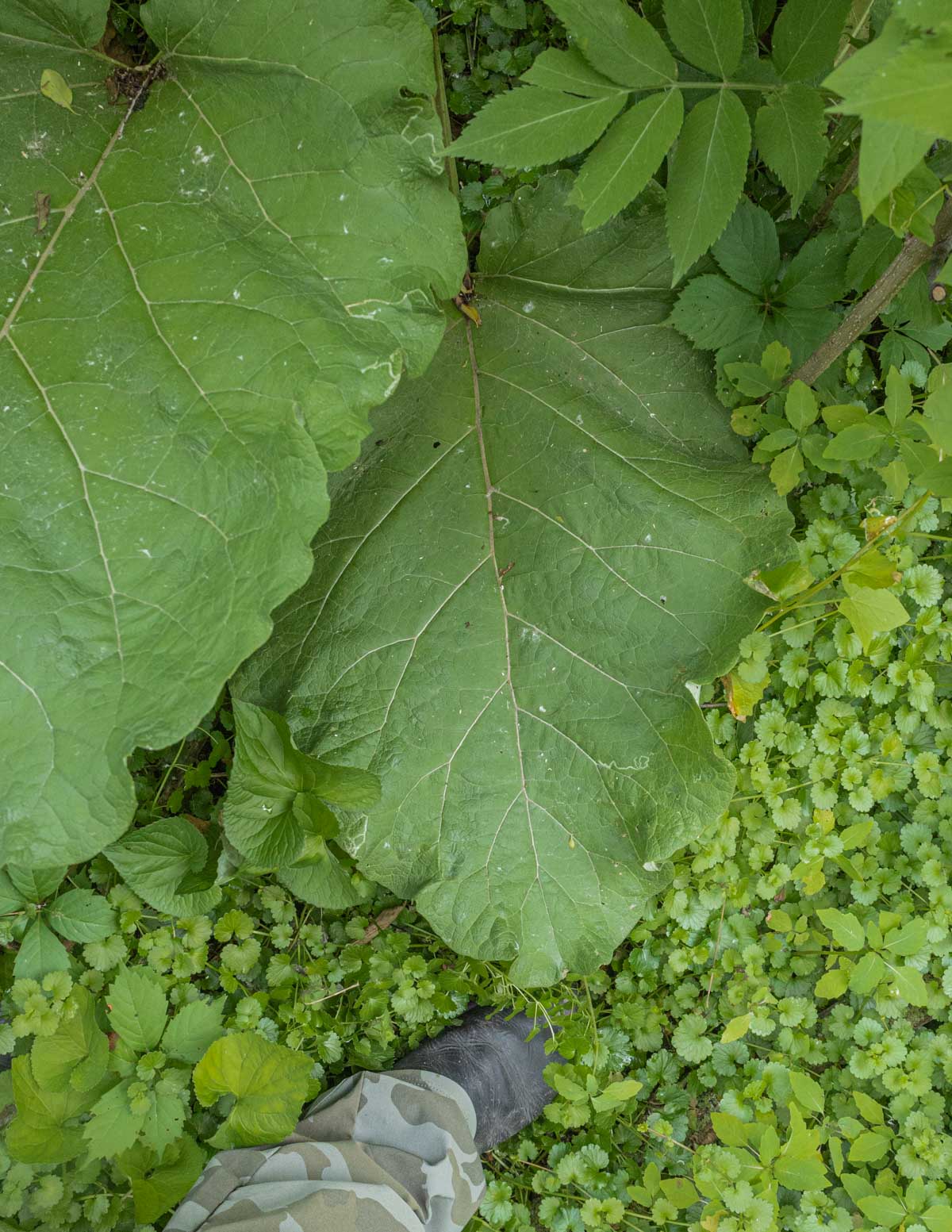
Use the pickles to make vegetarian yamagobo maki (yamagobo sushi rolls). Or serve them as a simple pickle. There's two types of burdock that can be used: greater Burdock (Arctium lappa) or lesser burdock (Arctium minus). Great burdock is the variety sold at Asian Grocers.
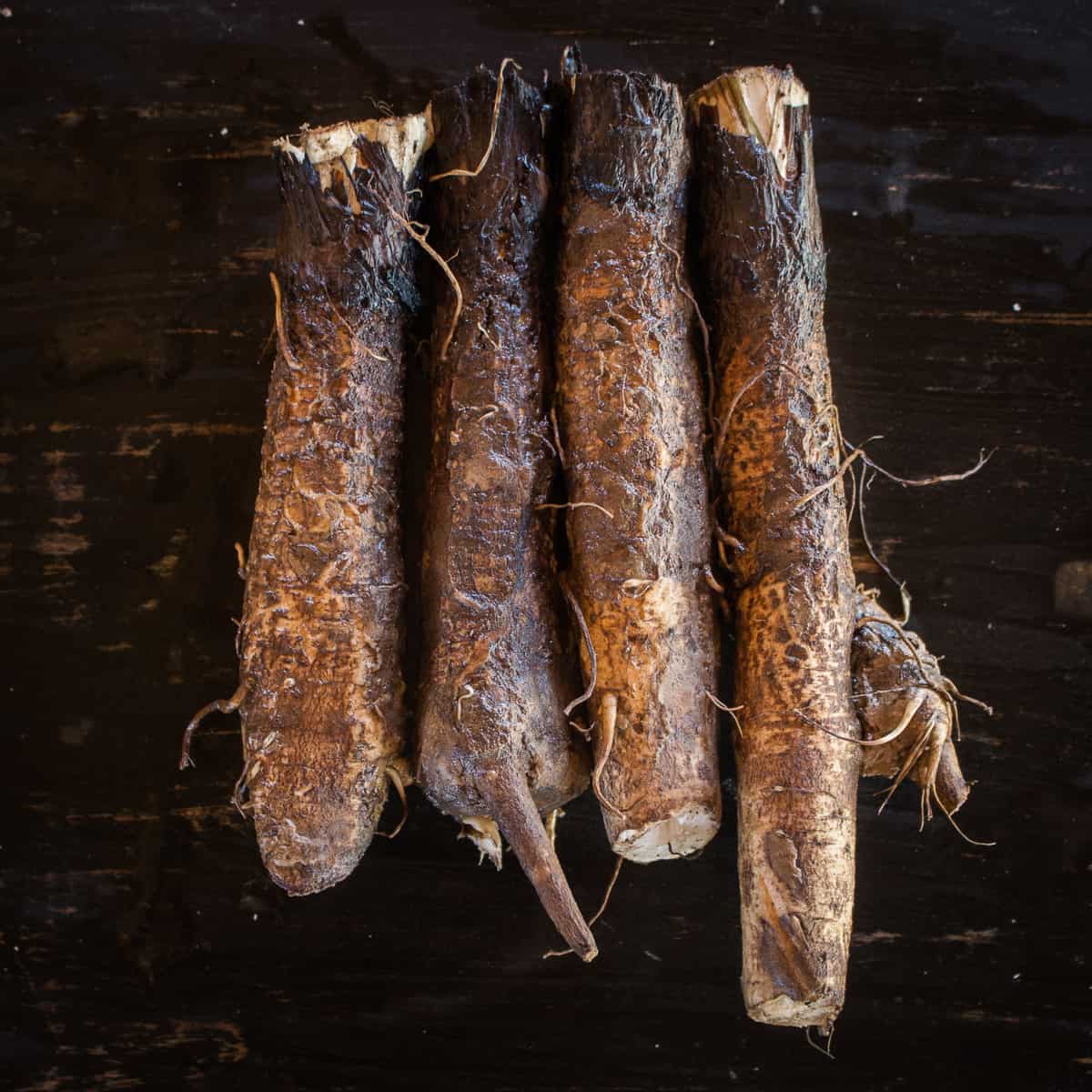
One thing that makes yamagobo special is in how the pickles are colored. By itself burdock root is white which doesn't make a very attractive pickle. To enhance the color, natural colorings like carrot powder, beet powder, tumeric, or ground fruits like aronia berries can be added.
How to Make Yamagobo
Homemade yamagobo involves a simple pickling process anyone can make. All you need is some fresh burdock roots, salt, rice vinegar, sugar, and a few spices. Some recipes don't call for a lot of seasonings but I like mine rich with herbs and spices.
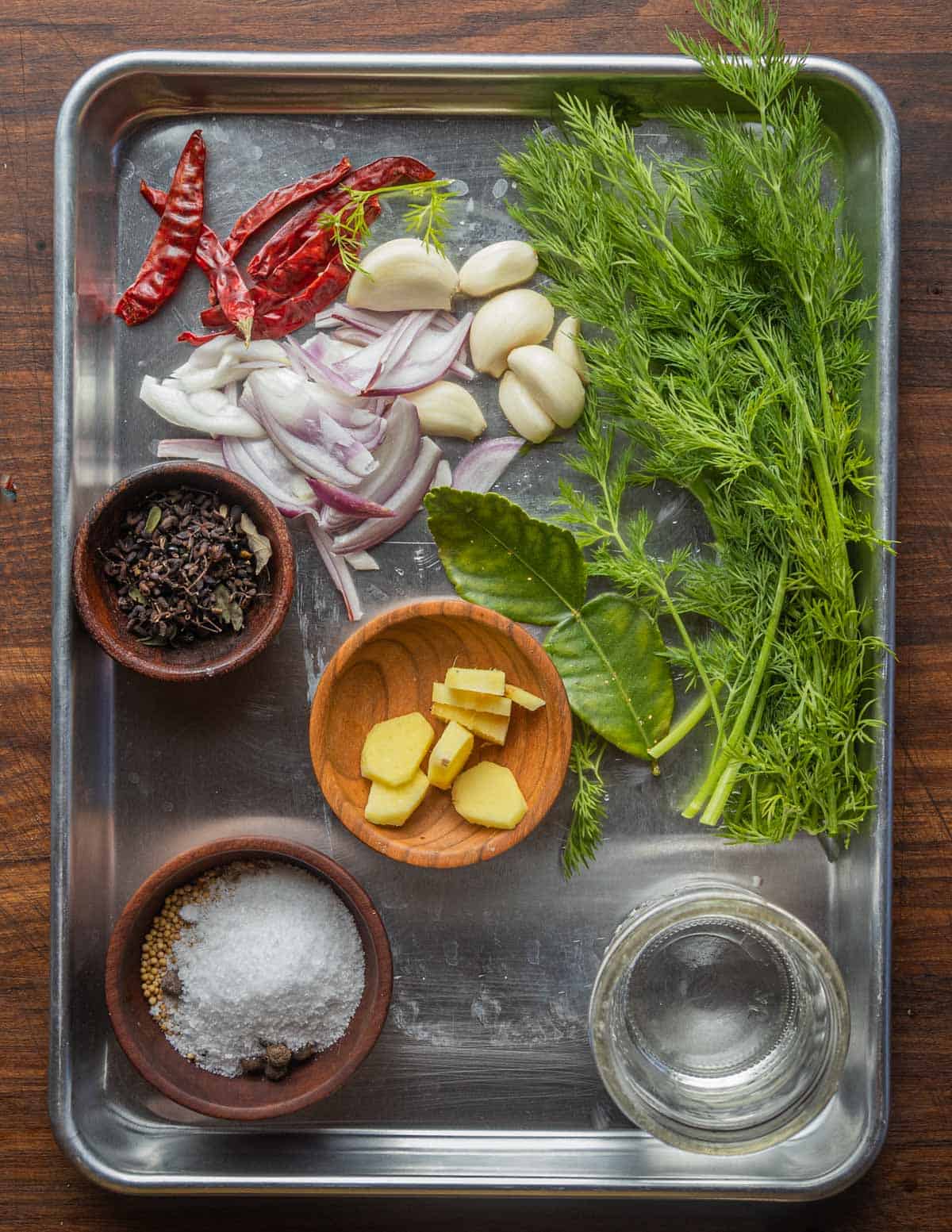
You'll also need something to color the pickles like tumeric or carrot powder. The images below describe the process.
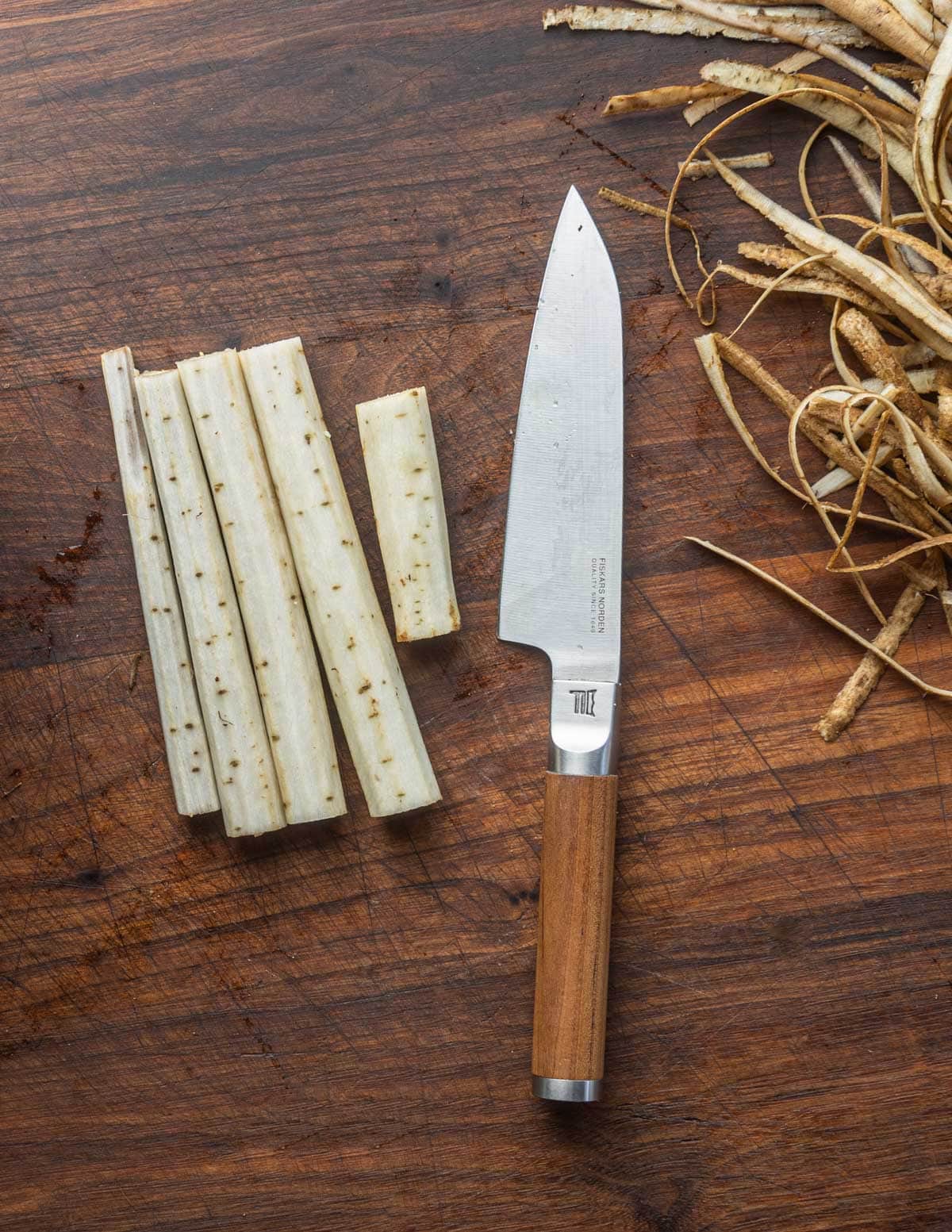
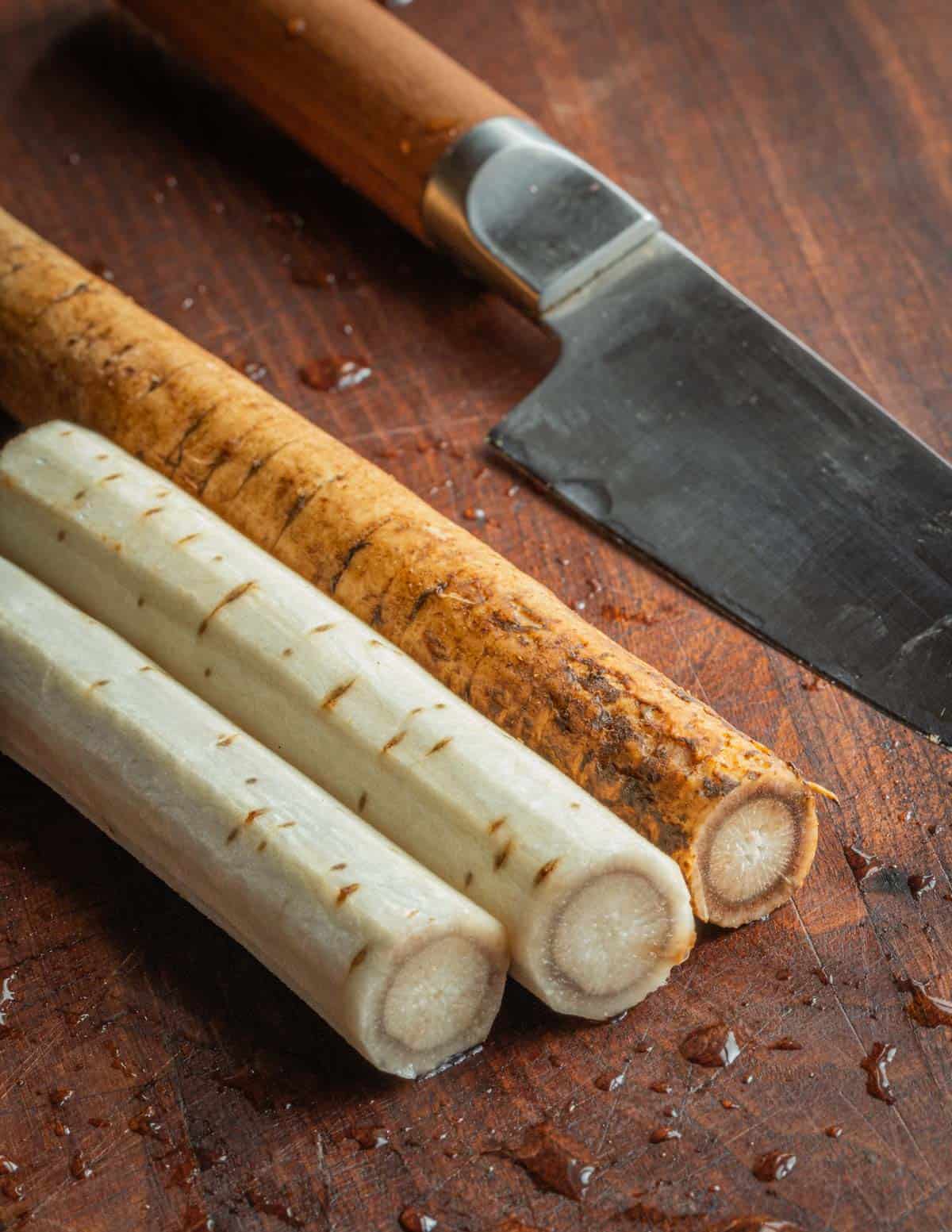
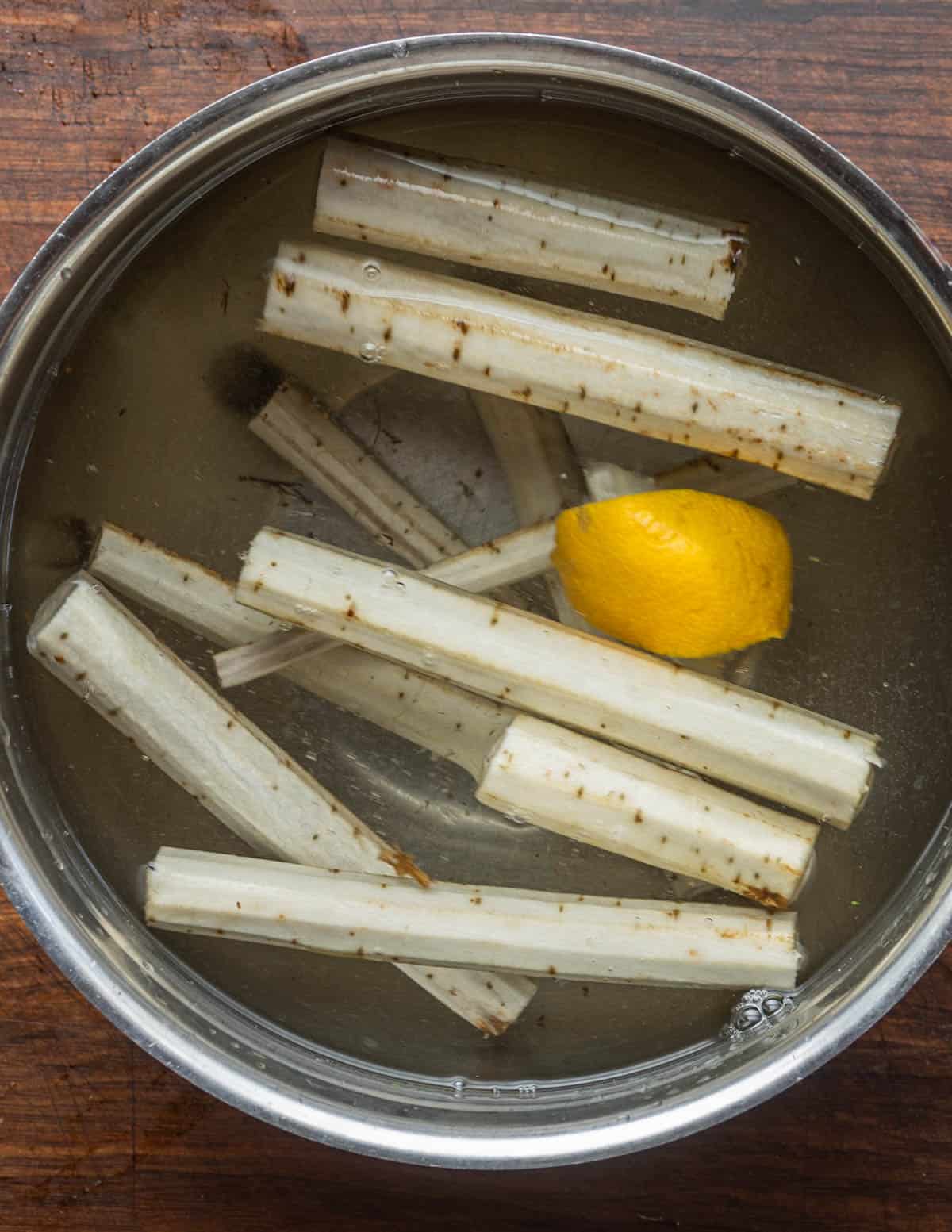
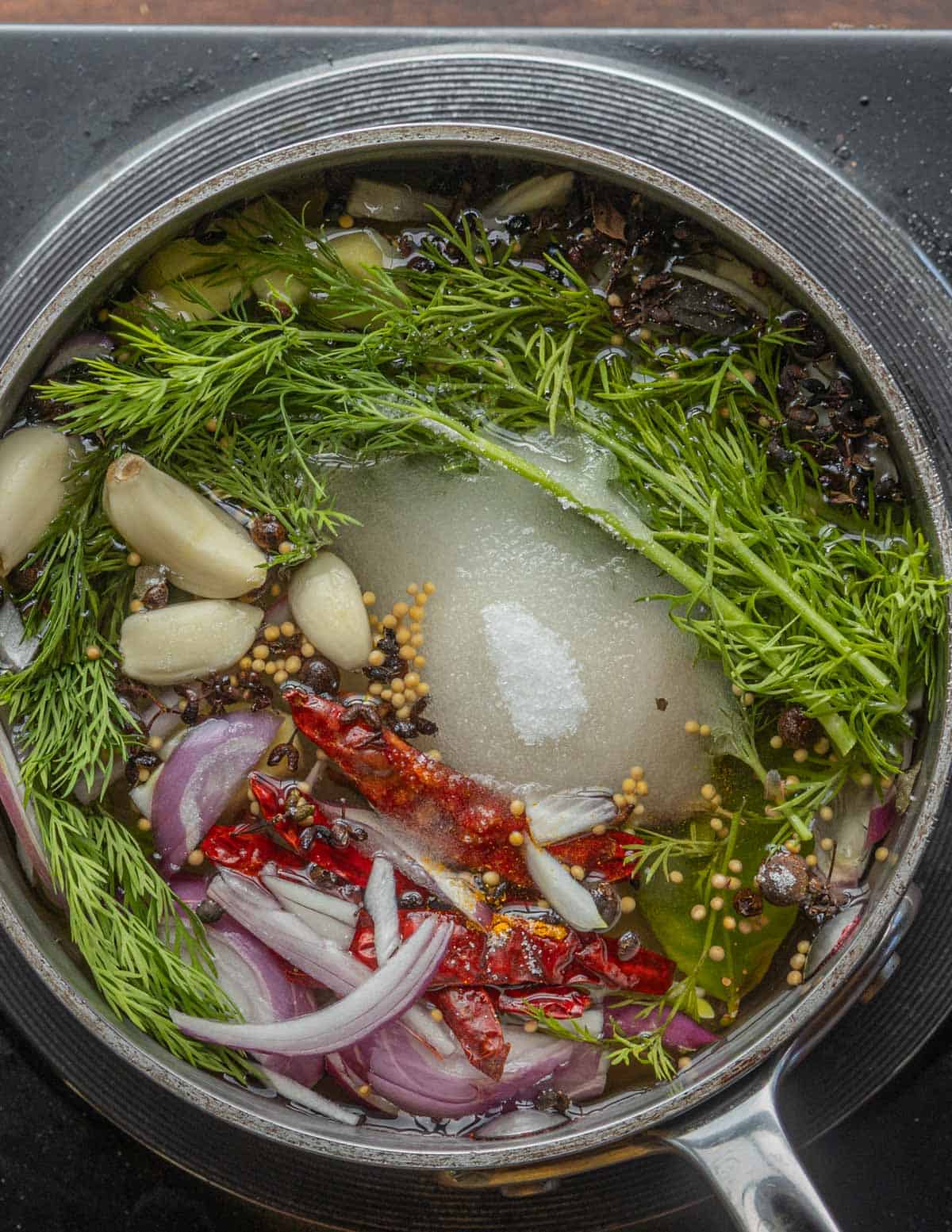
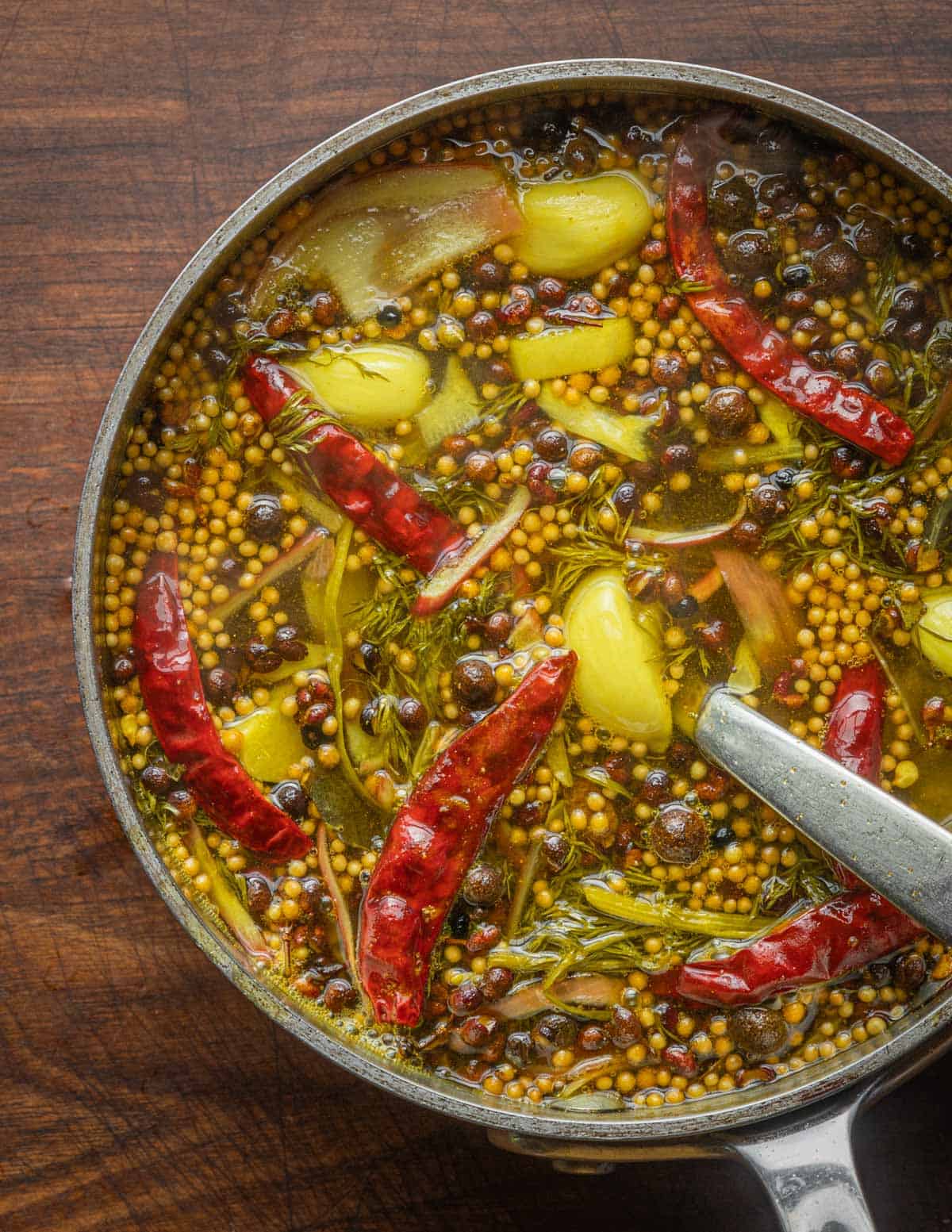
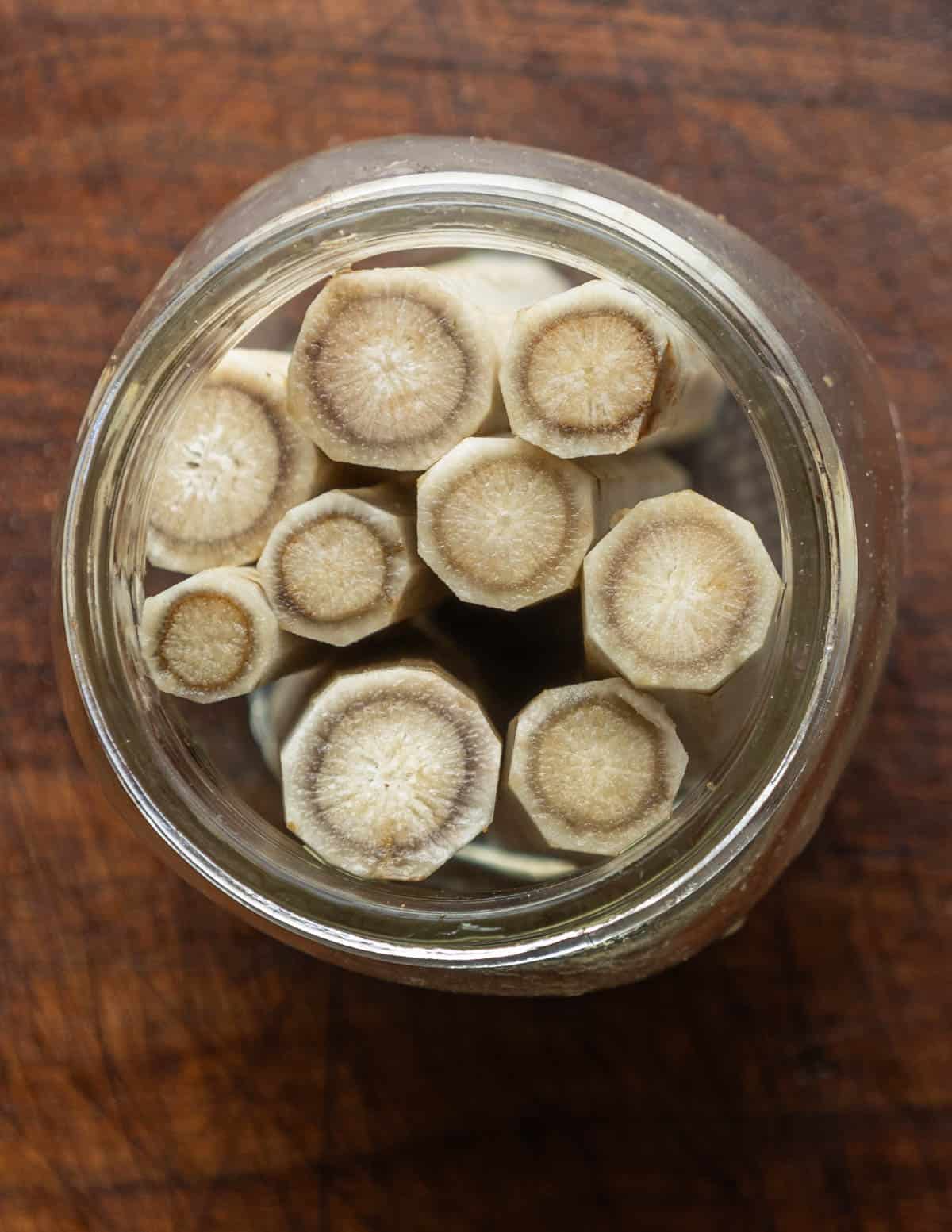

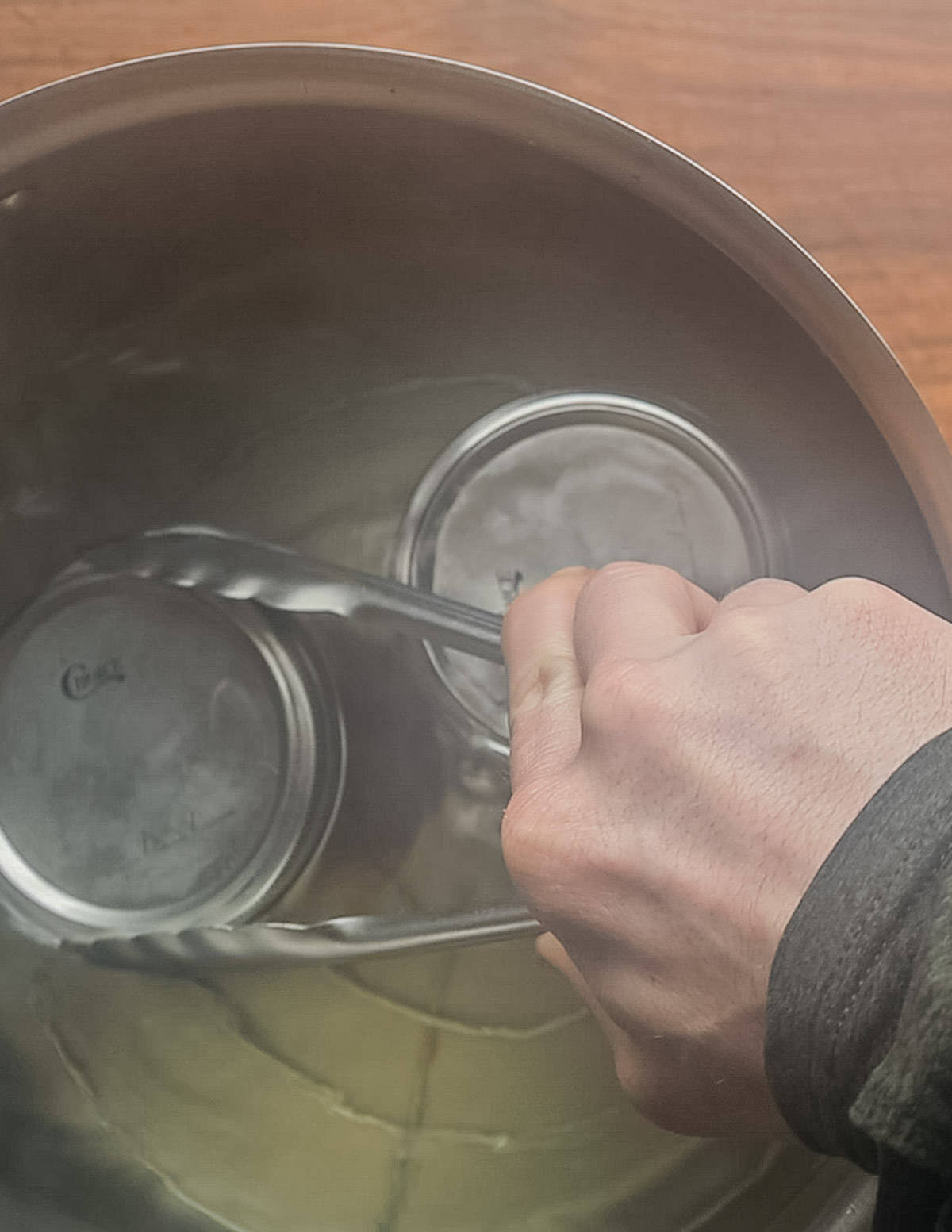
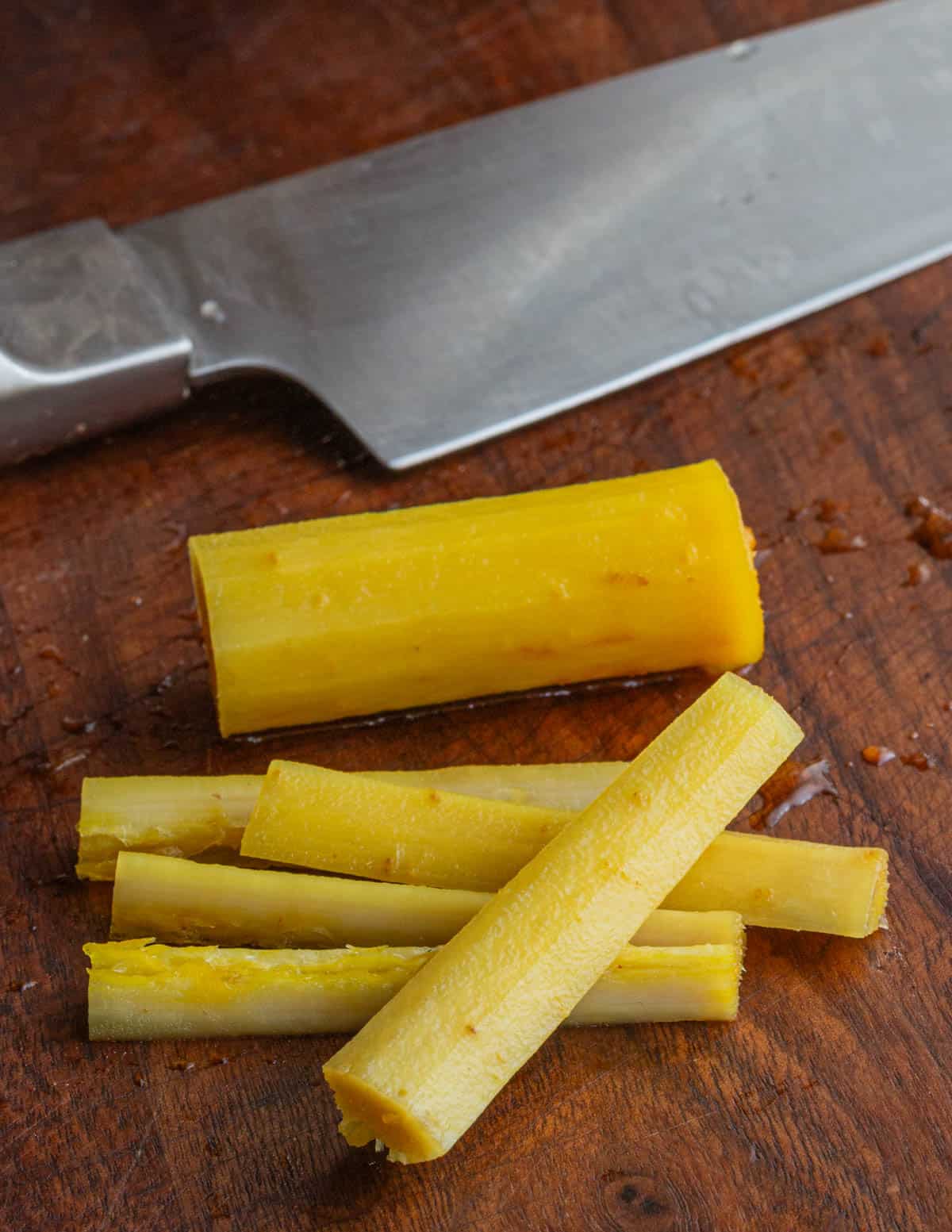
Related Posts
- Wild Szechuan Peppercorns (Prickly Ash)
- Gosari: Dried Japanese Fiddlehead Ferns
- Matsutake Miso Soup
- Kikurage: Wood Ear Mushrooms
Yamagobo (Pickled Burdock Root)
Equipment
- 1 Pint mason jar with lid
- 1 1 quart sauce pot
Ingredients
- 8 oz gobo burdock or common burdock
- ¼ cup water
- ¾ cup rice vinegar or apple cider vinegar
- 1 teaspoon salt or 1 tablespoon soy sauce
- 4 tablespoons sugar
Spices (Optional, feel free to make your own spice blend)
- 5 grams Fresh ginger A few slices
- 2 tsp Tumeric powder or 1 tablespoon carrot powder, beet powder, etc.
- 1 tsp Szechuan peppercorns / Prickly Ash berries
- 2 Dried hot chilis
- 1 Large clove garlic
- 1 tsp yellow mustard seed
- 2 Kaffir lime leaves
- 5 Large allspice berries
- 1 Small handful Fresh dill
Instructions
Prepare the Burdock
- Peel the burdock and cut into 3 inch lengths. You can cut them into large pieces if you use a taller container.
- Meanwhile, bring the remaining ingredients to a boil, then cool.
- Discard the dill if using.
- Spoon the chilis, peppercorns and other solids into the bottom of the jar(s), then add the burdock root. This helps the jars to look nice and prevents spices from being trapped on the top.
- Add the pickle liquid to the jar, leaving a ½ inch headspace. Screw the lids on the jars.
Can the Yamagobo
- Bring a large pot of water to a boil. There should be enough water that the jars will be covered by 2 inches of water.
- Add the jars to the pot, cover with a lid, turn the heat to high. When the water comes to a boil, start a timer for 10 minutes.
- After ten minutes, remove the jars. Label, date, and store in a pantry.

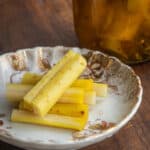
Matt
Rather than pressure canning, will you get decent results if just following the brine prep steps then placing in the fridge for a number of days?
Alan Bergo
Yeah but it's going to be very crunchy.
HK
I think there is a little misunderstanding. Yamagobô generally refers to species of thistle such as Cirsium dipsacolepis, Cirsium borealinipponense, and Synurus pungens (https://ja.wikipedia.org/wiki/%E3%83%A4%E3%83%9E%E3%82%B4%E3%83%9C%E3%82%A6).
It is a bit confusing because Phytolacca species are also called "Yamagobô", especially, Phytolacca acinosa. But at any rate, it does not usually refers to gobô, whether it is cultivated or naturalized.
Alan Bergo
That may very well be, but the funny thing about language is that things can morph and change over time depending on how it's used. My local Asian markets sell pre-prepared yamagobo, and it's definitely made with burdock root.
HK
This site explains what (real) Yamagobô is:
https://foodslink.jp/syokuzaihyakka/syun/vegitable/yamagobo.htm
Another similar example would be Kombucha. It is a drink made of seaweed, but in the U.S., it is something we call Kôcha Kinoko. To be fair, I did find a Japanese product that used "burdock" as one of the ingredients. So some of Yamagobôs are knockoffs.
Jason
A little different from what I've had at Japanese restaurants but pretty darn good.
Alan Bergo
Thanks Jason.